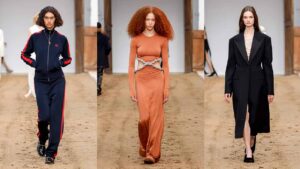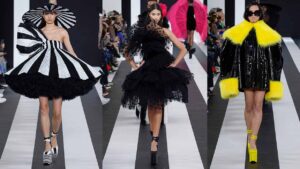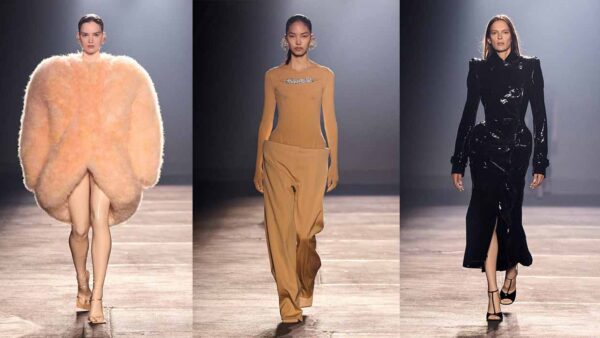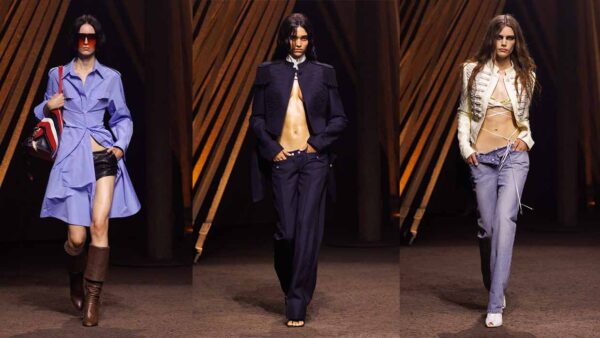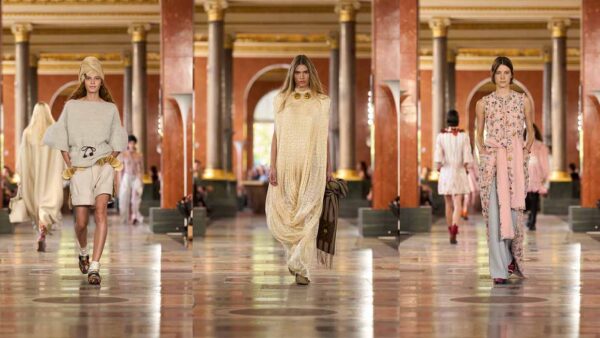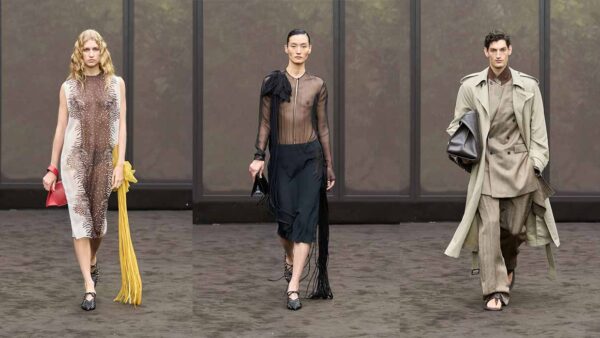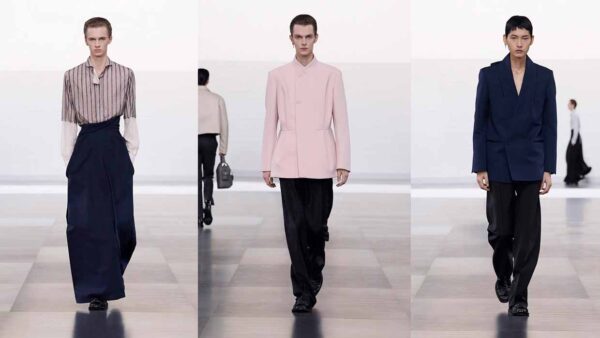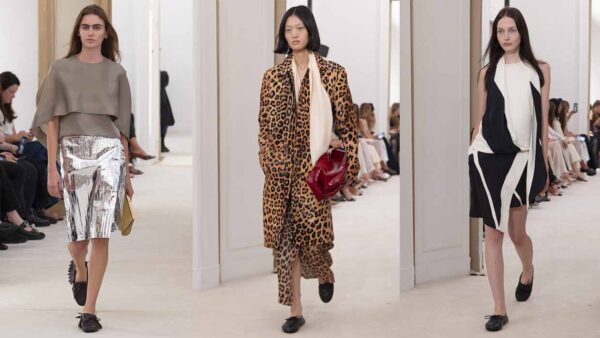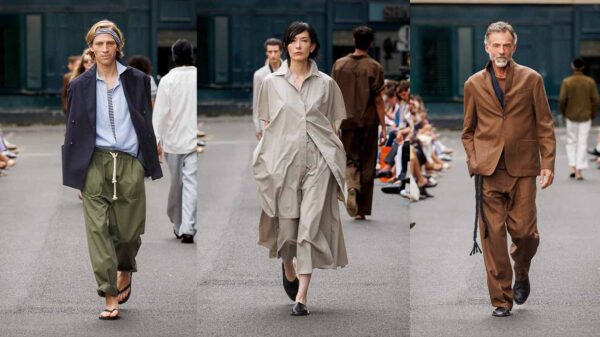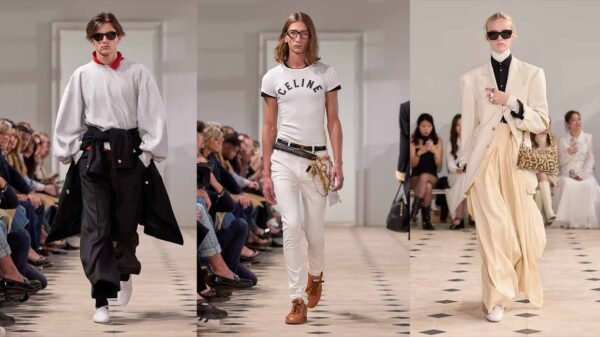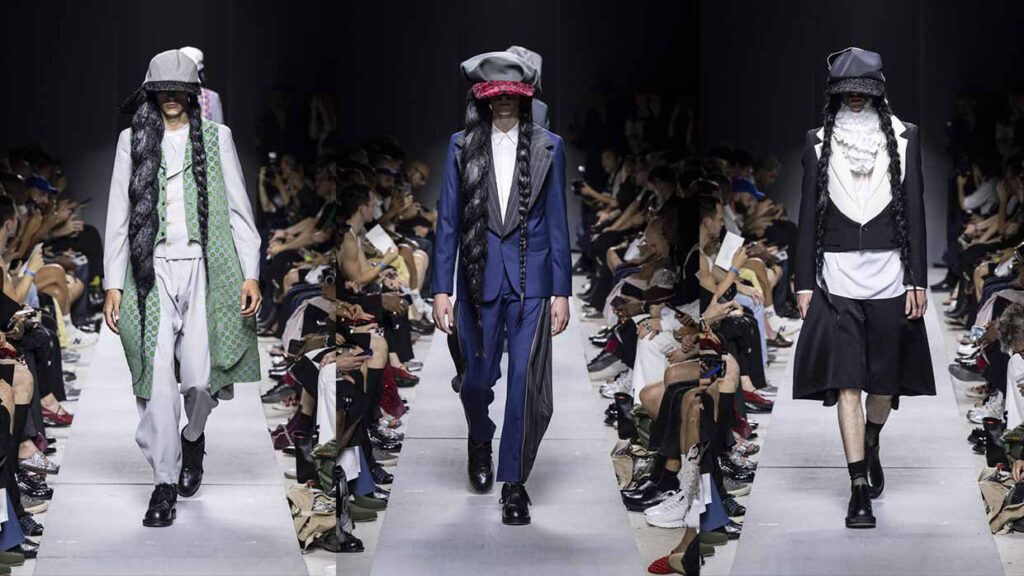
Rei Kawakubo has never made clothing simply for the body—she makes it for the spirit. At the Spring/Summer 2026 Homme Plus show in Paris, she did just that: crafting not suits, but visions.
“Not Suits, But Suits” was the declared concept, but the garments themselves felt more like relics from a post-industrial ritual—a fusion of tailoring and transcendence. With sliced silhouettes, braided wigs, and ceremonial volume, the show wasn’t just about what men wear—it asked why they wear it.
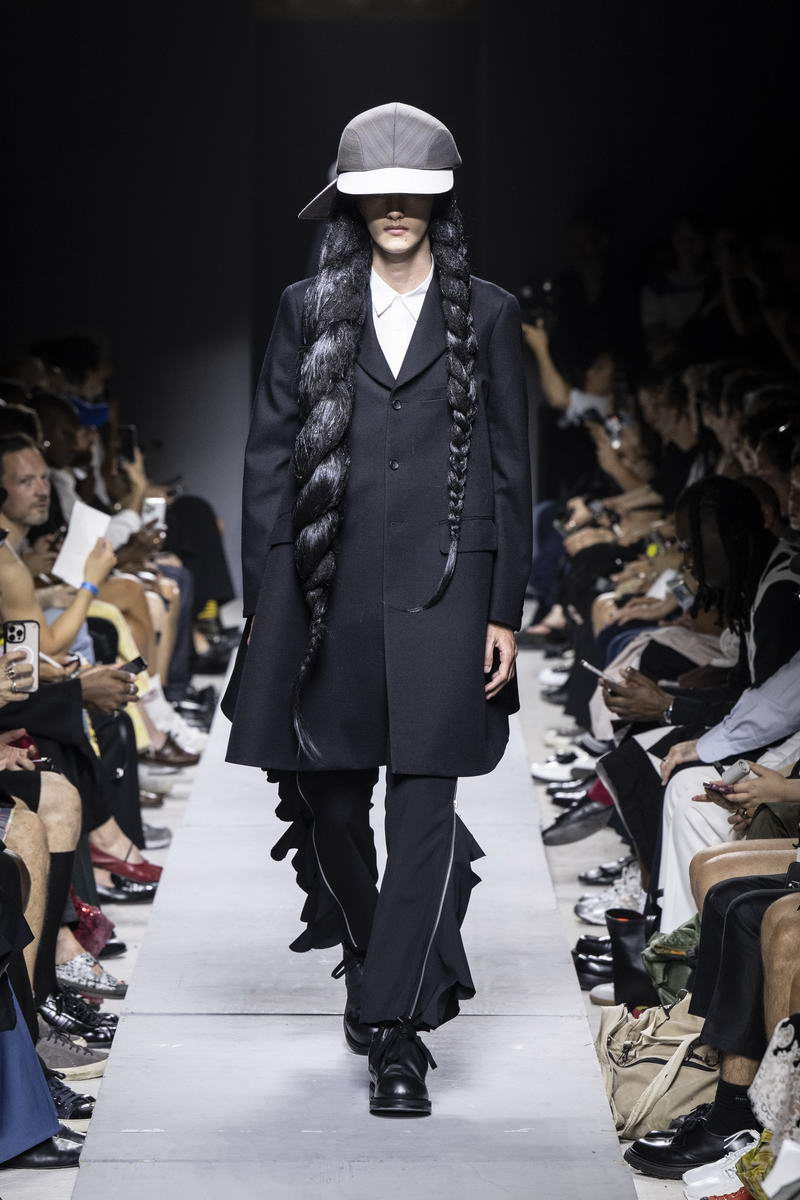
This season, Kawakubo deconstructed the archetype of the suit with surgical precision and poetic rebellion. Jackets came segmented, sliced, or panniered at the hips, turning conventional structure into sculptural abstraction. Lapels were either exaggerated or entirely missing; trousers and shorts hung like pleated banners from the waist, often worn over kilts.
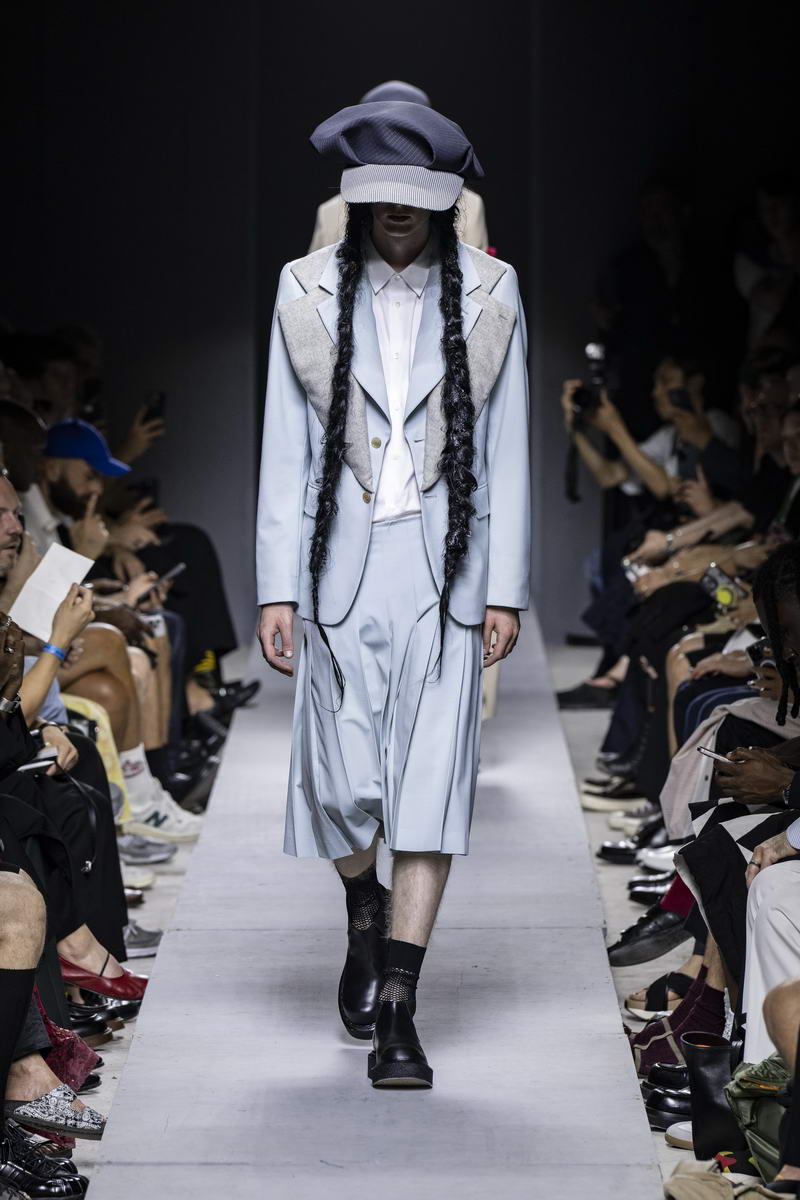
This wasn’t officewear—this was armor for an age of spiritual reawakening.
Each look was an assemblage of contradiction: ruffled shirting peeking from under sharply cropped jackets, triple-layered silhouettes that evoked both masculinity and vulnerability. It was tailoring dislocated from function and rededicated to emotion.
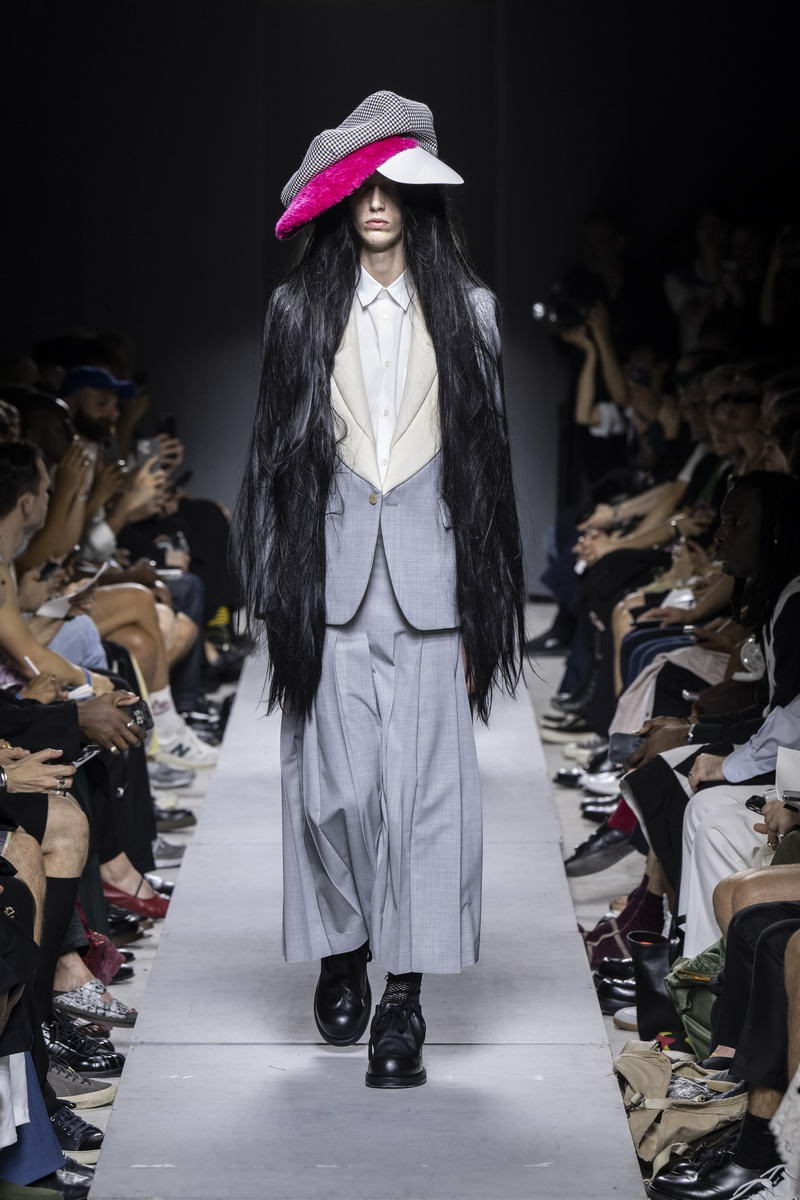
There were moments of Victorian drama, Japanese folklore, and club-kid futurism—all threaded together with Kawakubo’s trademark refusal to conform.
If the clothes didn’t make it clear, the staging did: this was not a fashion show, but a rite. Set in an oppressive, airless concrete space likened to a temazcal sweat lodge, models emerged from the heat like high-fashion avatars.
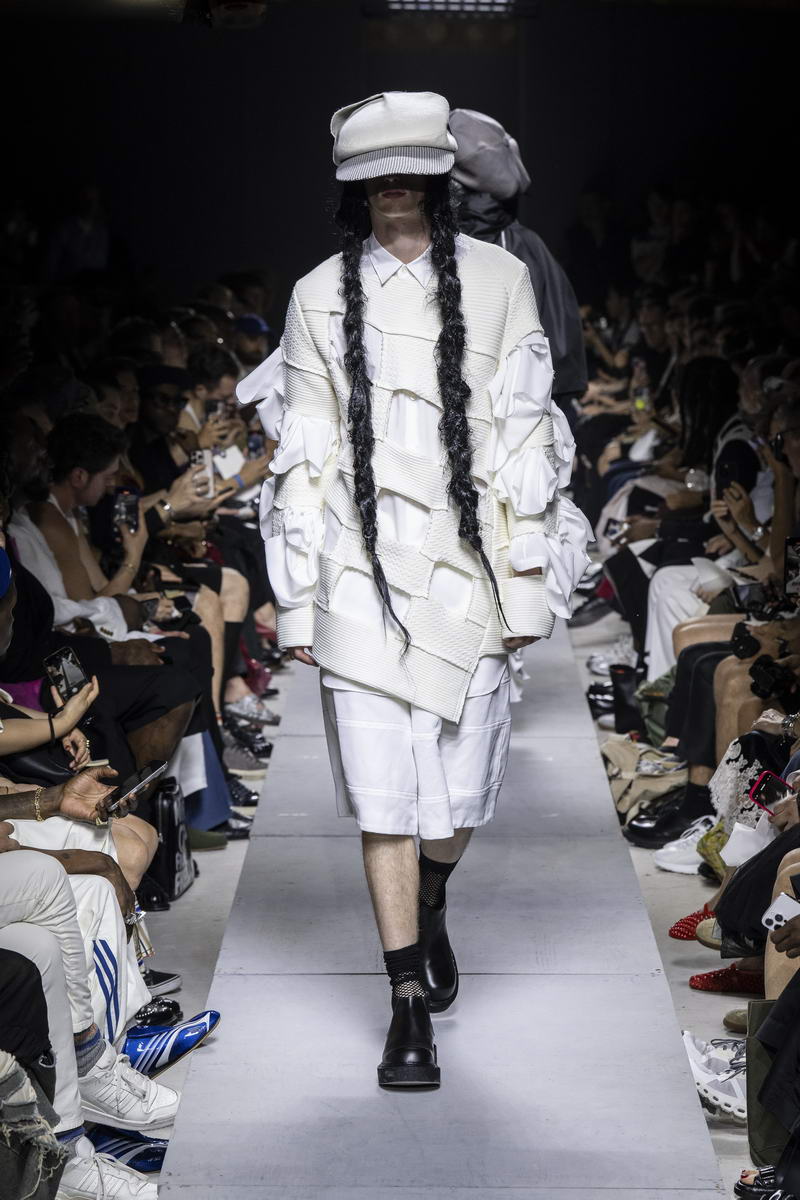
Long black braided wigs swung past waists, recalling ancient ritual and modern performance in equal measure. A soundtrack of guttural chants and humming made the space feel less like a runway and more like a spiritual invocation.
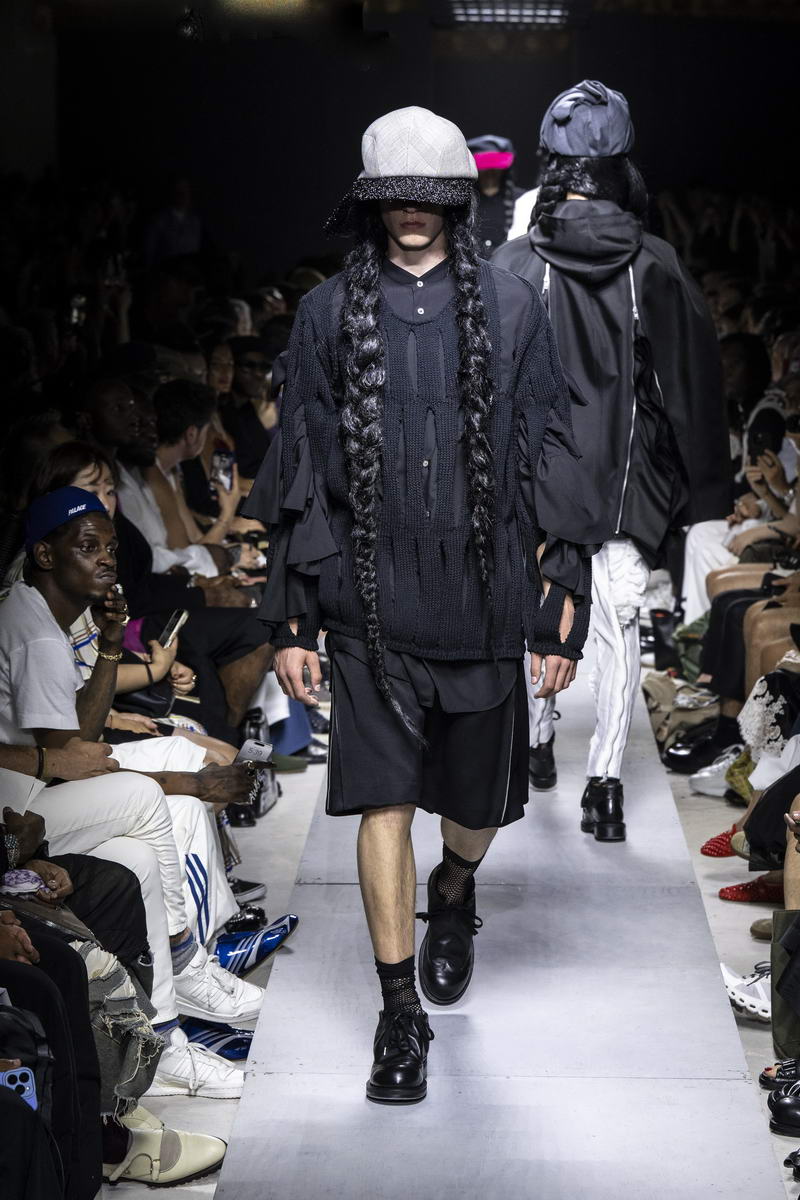
Kawakubo’s stated inspiration—a shaman leading toward peace, love, and fraternity—was woven into every element. This was not about escapism, but transformation. Clothing became the medium through which new identities could be imagined, not just worn.
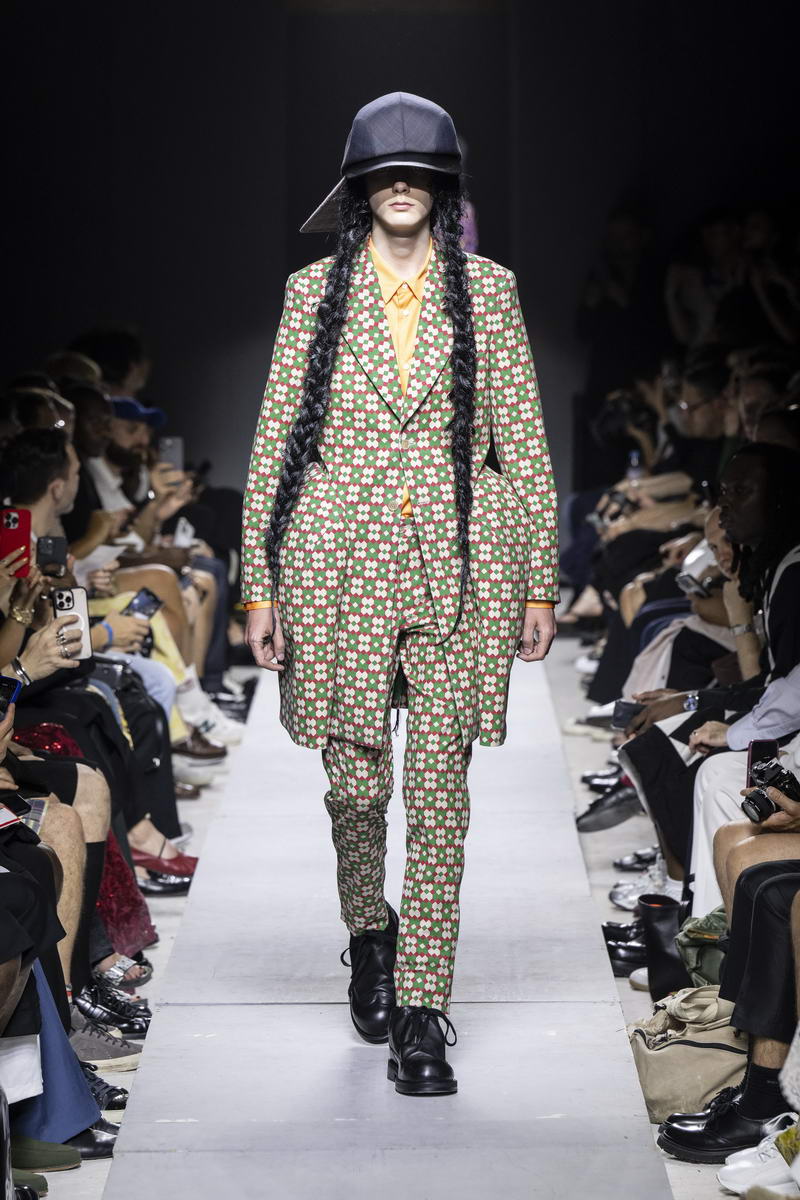
Layering was a commanding presence. Cropped blazers cloaked ruffled shirting, which spilled over kilts and voluminous pleated trousers. Garments were less worn than stacked, as though the body beneath required shielding or expression—or both.
Exo-garments in dense polycotton drill gave looks a cocooned silhouette, simultaneously severe and comforting.
Some jackets appeared disassembled mid-process, frozen in the act of being put on or taken off. This liminal quality—suspended between states—echoed the show’s metaphysical theme: clothing for those in transit between identities, cultures, or spiritual planes.

